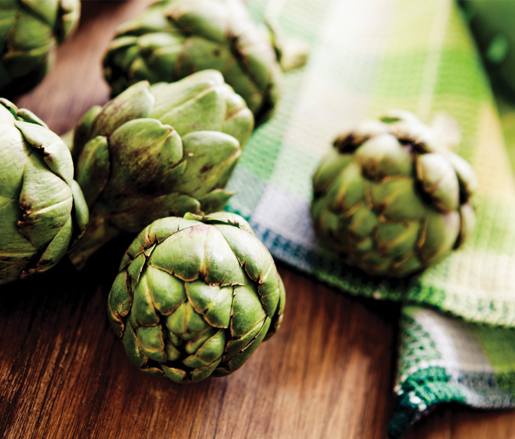
When we decided to embark on James Beard Foundation’s Taste America®, a national culinary tour of ten great American cities, there was a lot of discussion about which of our country’s amazing food towns we would go to first. The upshot: ten surefire winners. We asked chefs and food experts in the cities where we’ll be touching down to tell us what makes their hometowns so delicious.
Boston (October 18-19)
“Boston has some great influences—it’s been a port city since the Colonial period, which brings a diverse population. We’re a small area packed with great places. I would eat a lobster roll at Neptune Oyster Bar in the North End, hit the Copley farmers’ market for some bread and cheese, Flour for a sticky bun, and late at night, eat in Chinatown at the Gourmet Dumpling House.”
—Chef William Kovel, Catalyst, Boston
Chicago (September 20-21)
“When visiting Chicago, don’t miss eating something from Rick Bayless (dinner at Topolobampo or a torta at Xoco), a real Chicago hot dog, a tamale from the Maxwell St. Market, a walk through the Green City Market, and a doughnut from the Donut Vault. The biggest misconception about Chicago’s food scene is that we are a bacon-obsessed town. We do have great vegetables, and we know how to cook them.”
—Chef Andrew Zimmerman, Sepia, Chicago
Las Vegas (September 27-28)
“Las Vegas is a unique food city because there are so many different types of cuisines and chefs in one condensed area. Visitors shouldn't miss: Bartolotta, Restaurant Guy Savoy, Nobu, Michael Mina, and Julian Serrano. People often assume that the Vegas food scene is all about big buffets, huge portions, and over-the-top dishes. While there's a lot of that, there are also some really refined and thoughtfully executed dishes, as well. Las Vegas is truly a food destination.”
—JBF Award–winning chef François Payard, Payard, Las Vegas
Los Angeles (October 11-12)
“LA’s climate yields high-level produce. Peaches from Fresno sold at the Hollywood and Santa Monica farmers’ markets are the best I've ever eaten. And what other cities call “ethnic food” is just everyday food here. We have huge populations from El Salvador, Guatemala, Mexico, Korea, Japan, and China (to name only a few) so chefs don't have to simplify their cuisines for an Anglo clientele. It's the real deal.”
—Patric Kuh, JBF Restaurant Awards Committee
Miami (September 20-21)
“The melting pot of Latin cultures makes Miami a unique food city. Try La Latina for Venezuelan, Puerto Sagua for Cuban, Salmon Salmon for Cuban, Patacón in Doral for Colombian, the farmers’ market in Coconut Grove for incredible local produce, or Yardbird Southern Table & Bar for comfort food. Miami has grown so much in the past few years, and I believe the restaurant industry has grown along with the city.”
—Chef Lorena Garcia, Lorena Garcia Cocina, Miami
New York City (October 11-12)
“I love the cultural diversity in NYC’s food scene. Growing up in Hawaii meant easy access to terrific Asian food—Japanese, Korean, Chinese, Thai, and Vietnamese. But after living in NYC for 14 years, I have been introduced to so many cuisines—from Daniel Boulud’s impeccable French cuisine, to freshly shucked clams on Arthur Avenue’s sidewalks, and everything in between. NYC is the best place to eat globally without getting on a plane.”
—Robynne Maii, JBF Awards Book Committee
Philadelphia (October 4-5)
“In Philadelphia, farmland is so close that it's not out of the question to stock directly from farms and maintain relationships with the farmers. We have so many good restaurants and exciting, young chefs. Zahav, Stateside, Bibou, Alla Spina, and Standard Tap are just a few of my favorites. We’re not just a fast food, “cheesesteak” town—although the pork, broccoli rabe, and provolone sandwich is a testament to the city’s Italian heritage.”
—Chef Patrick Feury, Nectar, Berwyn, PA
Phoenix (October 18-19)
“A common misconception about the food scene in Phoenix is that people think Arizona is only desert where nothing grows. Really, the state has diverse geographies and climates. Our local farmers produce everything from greens, herbs, and citrus to heirloom tomatoes and cucumbers. Some culinary experiences you shouldn’t miss: pizza from Pizzeria Bianco, pho from Pho 43, Binkley's for a fine dining adventure, and the Barrio Cafe for authentic, regional Mexican.”
—Chef Nobuo Fukuda, Nobuo at Teeter House, Phoenix
San Francisco (October 4-5)
“What makes San Francisco such a special place to cook and eat is the people: the producers, who supply us with some of the finest ingredients in the world, and our open-minded and enthusiastic customers. If you're visiting, be sure to check out the famous Saturday farmers' market at the Ferry Building, which highlights the best of what our region has to offer.”
—JBF Award–winning chef Daniel Patterson, Coi, San Francisco
“San Francisco isn’t just ‘California Cuisine.’ There's a wide variety of cuisines and styles–both refined and casual."
—Emily Luchetti, Chair, JBF Board of Trustees
Washington, D.C. (September 27-28)
“Washington, D.C.’s food scene just exploded within the last five years. There are new concepts opening every week catering to the diverse tastes of the city’s globally minded citizens. People think D.C. is filled with smoky steak joints where senators huddle in dark corners to broker political deals—and those places still exist, but they are the exception. With top chefs, Michelin stars, and Beard Award winners, our food is exciting, fresh, and world-class.”
—JBF Board of Trustees member Eric Kessler, Founder, Principal, and Managing Director, Arabella Advisors



-57 web.jpg)


